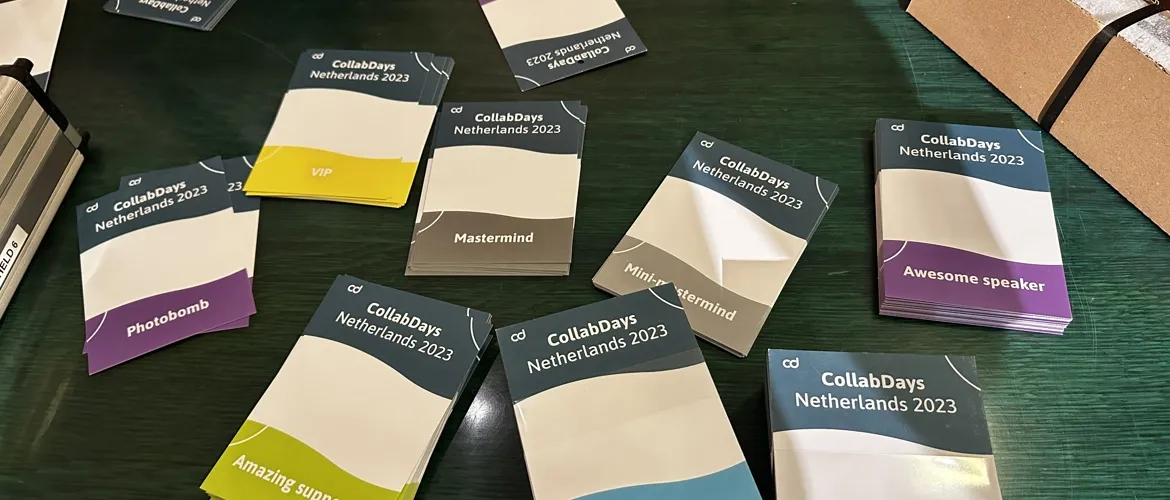What does your conference badge need to look great?
February 9, 2023 • 4 min read • By Adnan Pavlovic, Content & Marketing


When it comes to organizing professional conferences and events, choosing the right platform can make all the difference. One option is to use one of the many ticketing apps on the market to handle attendee registration, and then manage everything else through separate tools or even Excel spreadsheets (which, unfortunately, is still the most common scenario).
This approach might seem easy at first, but it quickly becomes clear that it falls short in several key areas essential for professional events. It often results in the need to juggle attendee data across various systems. Lead retrieval? You’ll have to import the attendee data. Mobile app? Import it there, too. Badging? Event check-in? You get the idea.
nother unavoidable issue with this scenario is that a lot gets “lost in translation” during the process.
Fortunately, there are alternatives. Event management platforms like run.events not only handle ticketing but also offer a full suite of features on a single platform, including a mobile app, event networking, built-in tax invoicing, sponsor management, lead retrieval, expo planning, calls for speakers, agenda and speaker management, professional badging, and many other features. This elevates event management capabilities to an entirely different level, giving event organizers full control over all their activities.

And then there’s event promotion and marketing. I think we can all agree that the best events are sold-out events.
Some ticketing apps include basic email marketing, but this is insufficient for driving registrations and ticket sales for professional conferences. run.events excels with its event promotion and marketing features — it enables zero-cost-per-acquisition ticket sales through built-in influencer campaigns. It also links ticket sales to specific marketing efforts, such as newsletters, social media, or ad displays in search engines, allowing event organizers to always know through which marketing campaign each ticket was sold. This makes it easy to see what works, what doesn’t, where to invest money, and where to cut the budget. Not knowing what works isn’t marketing; it’s guessing. And run.events eliminates the guessing.
Another standout feature of run.events is its ability to retarget abandoned carts, helping event organizers sell more tickets and increase registrations. Event organizers can see who abandoned carts, at what point in the purchase process they were abandoned, and then re-target those users with discounts or special email campaigns. This feature is unique to run.events and is impossible to achieve with the ticketing apps available on the market.

And last but not least, the price needs to be right. Another standout feature of run.events is its ability to retarget abandoned carts, helping event organizers sell more tickets and increase registrations. Event organizers can see who abandoned carts, at what point in the purchase process they were abandoned, and then re-target those users with discounts or special email campaigns. This feature is unique to run.events and is impossible to achieve with the ticketing apps available on the market.
run.events doesn’t charge high percentage fees on tickets. Instead, we offer a flexible pricing model that adapts to events of every size and the level of support required, typically saving over 25%-50% compared to ticketing apps that charge percentage fees. For that price, our customers don’t just get ticketing; they get a fully comprehensive platform on which they can base their entire event business, with proper support. At run.events, we care about our customers because their success is our success, too.

Even the best-organized events can only be successful if there are enough attendees. run.events doesn't only help you plan and deliver your event; we also provide a powerful toolset to sell tickets, drive registrations, and measure results
Boost Event Marketing and Increase Registration NumbersAnd last but not least, the price needs to be right. Another standout feature of run.events is its ability to retarget abandoned carts, helping event organizers sell more tickets and increase registrations. Event organizers can see who abandoned carts, at what point in the purchase process they were abandoned, and then re-target those users with discounts or special email campaigns. This feature is unique to run.events and is impossible to achieve with the ticketing apps available on the market.
run.events doesn’t charge high percentage fees on tickets. Instead, we offer a flexible pricing model that adapts to events of every size and the level of support required, typically saving over 25%-50% compared to ticketing apps that charge percentage fees. For that price, our customers don’t just get ticketing; they get a fully comprehensive platform on which they can base their entire event business, with proper support. At run.events, we care about our customers because their success is our success, too.
Recap
Event marketing has changed greatly in recent years. From influencer marketing and precision marketing tracking to abandoned cart retargeting, push notifications, and custom in-app advertising, run.events provides powerful tools to simplify and optimize your event marketing in a way suitable for the modern event marketing approach. Utilizing these marketing-tailored run.events features, will not only increase your ticket sales and boost attendee engagement but open new revenue streams for your event at no extra cost.



